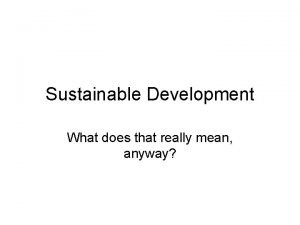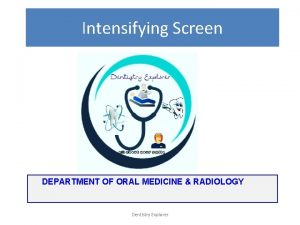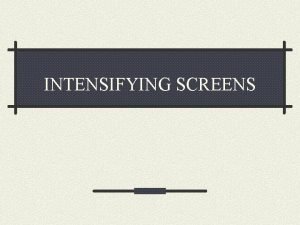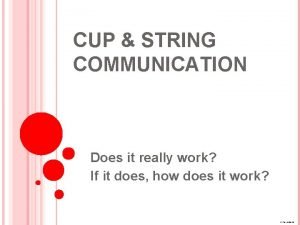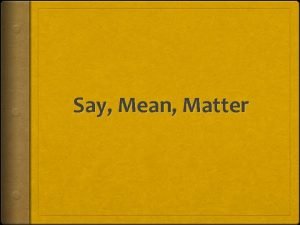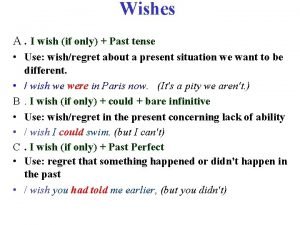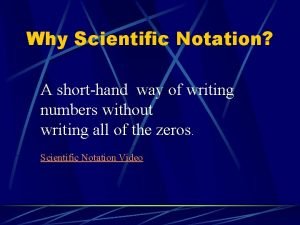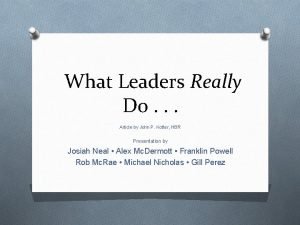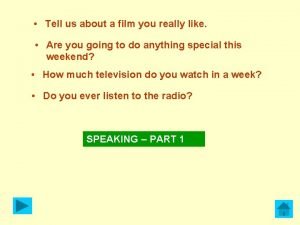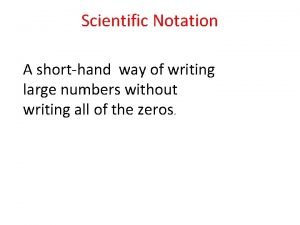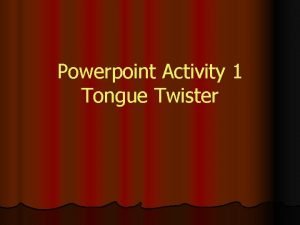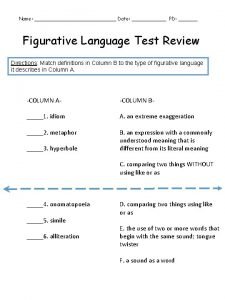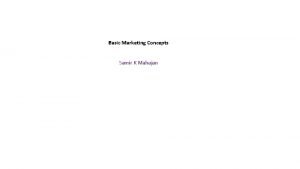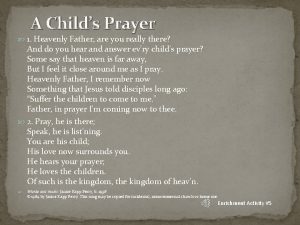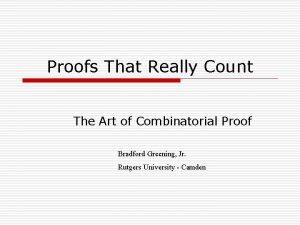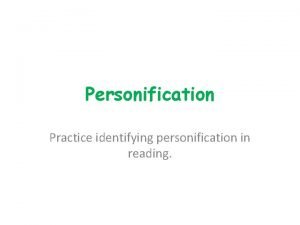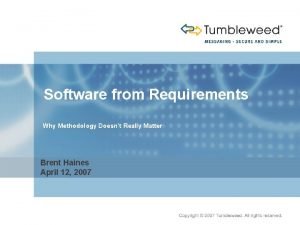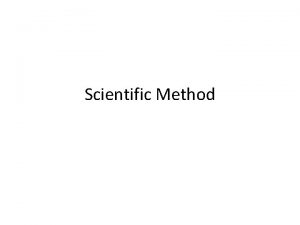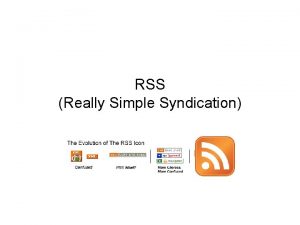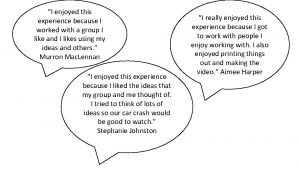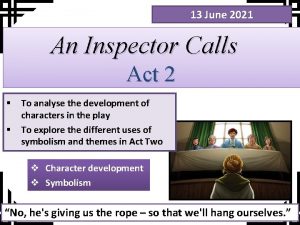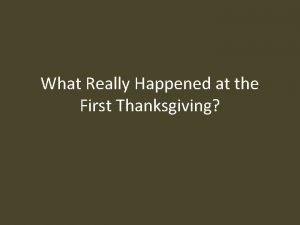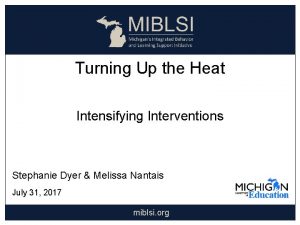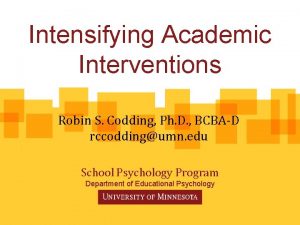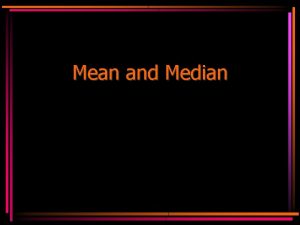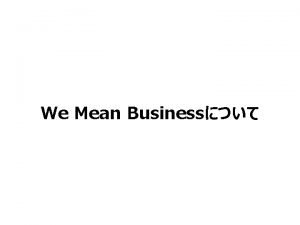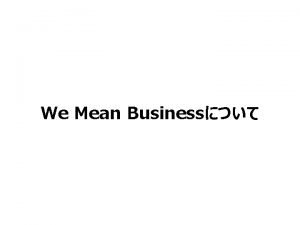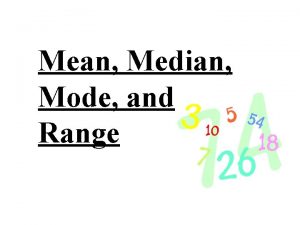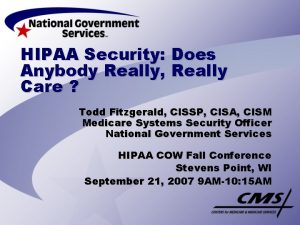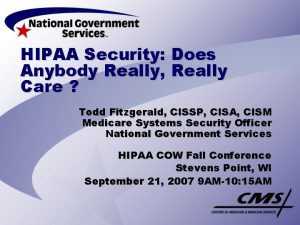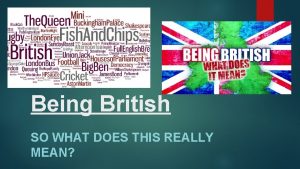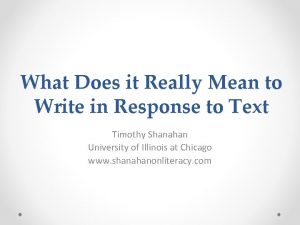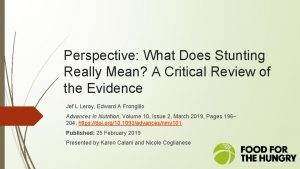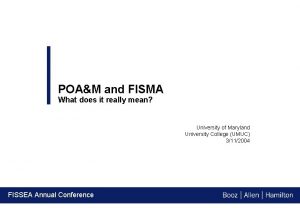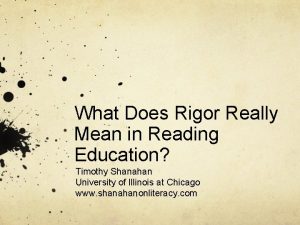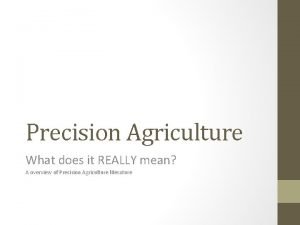Intensifying Interventions What Does it Really Mean Melissa








































- Slides: 40

Intensifying Interventions: What Does it Really Mean Melissa Nantais, Ph. D. Steve Goodman, Ph. D. MIBLSI State Conference November 2016 miblsi. org

Session Outcomes After this session, participants will… o Identify the core features that are addressed in intensifying interventions o Develop a summary of the cycle of instructional and behavioral supports o Describe the connection between reading and behavior supports across the tiers 2

Activity o Write down a few words or phrases that come to mind when you hear the phrase “intensifying supports” o Share what you wrote down with an elbow partner at your table o Be prepared to share out 3

Intensifying Instructional and Behavioral Supports Purpose: to improve efficiency and effectiveness in producing successful outcomes for all students o Increasing intensity of supports means increasing the individualization around specific needs: o Precision in identifying the need o Targeted focus of addressing the identified need o Increased instruction, practice and feedback o 4

Intensifying Supports Three-way intersection of: o Core features and enablers addressed when intensifying supports o Cycle for intensifying instructional and behavioral intervention supports o Integration of reading and behavioral supports 5

Non-Examples of Intensifying o Provide instruction in slower manner o Provide instruction louder o Provide instruction based on “learning styles” o Provide instruction in a specific classroom (e. g. , special education classroom) 6

Activity o Take 60 seconds to write down other common non-examples of intensifying supports o When prompted, start with the tallest person at your table and take turns sharing out one example and rotate clockwise around the table sharing non-examples or passing until we ask you to stop 7

Where We’ve Been 8

Shifting Our Thinking: Two Concepts 1. Enablers to Intensifying Instruction 2. Core Features to address when intensifying interventions 9

Enablers Considerations when intensifying interventions o Not sufficient on their own to improve student outcomes o Universally can be applied across reading & behavior o Examples: o Extend time o Double does intervention lesson o Interventionist o 10

11

Core Features Necessary to intensifying interventions o Critical to improving outcomes o Enhanced by enablers o Examples: o Precision o Engagement o Feedback o Practice o 12

Principles of effective instruction for academic and social behavior based on Coyne, Kame’enui, & Carnine, 2007 Principle Integrated Examples Focus on big ideas Directly connect behavioral expectations to academic expectations (e. g. , be responsible means engaging in class instruction) Teaching Directly teach academic facilitative behaviors (e. g. , attending, engagement responses) Feedback Providing learners with information about their responses Differentiation Prompt what the student should be doing (academic engagement) rather than not doing (problem behavior), schedule instruction to increase successful responding and reduce behavior problems Strategic integration Teach students to use skills learned in reading problem solving to apply to social problem solving (e. g. , identifying context cues, understanding meaning) Background knowledge Make connections from concepts previously learned in one area (e. g. , content from story) as background knowledge for another area (e. g. , importance of responsibility) Review Monitor student performance within the instructional setting regarding need for review in both 13 behavior AND academic variables

MIBLSI website 14

~80% of Students SECONDARY PREVENTION • Check in/out • Targeted social skills instruction • Peer-based supports • Social skills club • Feedback ~15% Practice Diagnostic Assessment Engagement ~5% Precision Functional Assessment TERTIARY PREVENTION • Function-based support • Wraparound • Person-centered planning • • PRIMARY PREVENTION • Teach SW expectations • Proactive SW discipline • Positive reinforcement • Effective instruction • Parent engagement •

Behavior and Reading 3 -Tier Model Intensive Intervention Individualized, functional assessment, highly specific 1 -5% 7 -15% Universal Intervention Core Instruction, all students Preventive 80% Reading Behavior Cir. 2006 Targeted Intervention Supplemental, some students, reduce risk 16

Examples of Behavior and Reading Practices Intensive Intervention Universal Prevention Behavior • Identify expectations • Teach • Monitor • Acknowledge • Correct Reading • Evidence based curriculum focused on: • Phonemic Awareness • Alphabetic Principal • Fluency • Vocabulary • Comprehension • Adequate teaching time • Trained instructors • Progress monitoring • Active participation with frequent feedback Behavior • Individualized, functional assessment based behavior support plan Reading • Scott Foresman Early Reading Intervention • Reading Mastery • Corrective Reading Targeted Intervention Behavior • Check-in, Checkout • Social skills training • Mentoring • Organizational skills • Self-monitoring Reading • Teacher-Directed PALS • K PALS • First Grade PALS • Road to the Code • REWARDS • Peer Assisted Learning Strategies • Read Naturally Continuum 17 of Supports

Activity Take 3 minutes to review the information for your assigned slides related to the concepts of “enablers” or “core features” for intensifying interventions o Partner 1: Enablers o Partner 2: Core Features 18

Activity Take turns explaining your assigned concept to your partner o Partner 2 will explain first, partner 1 will listen and then use one of the following sentence starters as a check for understanding: o “So, what I heard you say was …” o “My understanding from what you shared is. . . ” o 19

Integrated function of academic and behavior 20

Distribution of Elementary Reading Intervention Level a Michigan Example (based on DIBELS assessment) (n = 201) (n = 4074) 24% 56% 33% 24% 43% 20% 21

Possibilities of Behavior/Academic Concerns around function of problem Behavior Problems Nonrelated Behavior and Academic Problems Interrelated Behavior and Academic Problems 22 Academic Problems

Cycle of Academic and Behavioral Failure: Aggressive Response Teacher presents (Mc. Intosh, 2008) student with grade level academic task So, which is it… Academic problems lead to behavior Not sure… problems? Student engages Student’s academic Probably a combination of bothin problem skills do not improve or behavior Behavior problems lead to academic problems? Student escapes academic task Teacher removes academic task or removes student

Cycle for Intensifying Intervention Supports Evaluating Support Planning Support Core Elements of Instruction and Behavior Supports Managing Support Delivering Support

Planning Support Purpose: to increase effectiveness in planning of instruction and/or behavior supports o Identify the specific area of need within the big idea of content area o Identify the skill or prerequisite skill that needs further development 25

Integrating Assessments Functional Behavior Assessment 1. Identify function of problem behavior: To Avoid or Escape: Tasks or activities o Difficult academic tasks o Non-preferred activities Attention o Adults (e. g. , correction, specific individuals) o Peers (e. g. , harassment, specific individuals) Sensory stimulation To Obtain or Retain: Activities or tangible objects o Preferred activities o Preferred items Attention o Adults o Peers Sensory stimulation 2. If function of problem behavior is to avoid or escape academic task demands: Complete Functional Academic Assessment to identify academic tasks that trigger behavior and academic skills to teach (integrated assessment) 26 Functional Academic Assessment 1. Identify nature of the academic problem: “Can’t Do” Problem (i. e. , unable to do): Acquisition (accuracy) deficit o Deficit in target skills o Deficit in prerequisite academic skills o Application of misrules Fluency (automaticity) deficit Generalization deficit Mismatch between skill level and task difficulty (tasks too hard) Problems due to missing prerequisite skills (e. g. , organization, focusing attention) “Won’t Do” Problem (i. e. , unwilling to do): Motivational deficit 1. If student is repeatedly removed from instruction or student’s problem behavior repeatedly interrupts instruction: Complete Functional Behavior Assessment to identify triggers of problem behavior and social skills to teach (integrated assessment)

Integrated Process Referral Improve fidelity of Tier I academic No supports and monitor progress Tier I academic supports implemented with fidelity? Student is referred for additional support Academic Yes Does student’s behavior interfere with learning? Document previous strategies implemented to address problem Conduct functional academic assessment No Yes Both Document previous strategies implemented to address problem Develop academic support plan and monitor progress Is initial concern Behavior Tier I behavior academic, supports behavior, or both? implemented with fidelity? Yes Conduct integrated functional assessment Develop integrated support plan and monitor progress Improve fidelity of Tier I No behavior supports and monitor progress Conduct functional behavior assessment Yes Is function to escape/avoid academic tasks? No Develop behavior support plan and monitor progress

Delivering Support Purpose: to increase specificity in skill develop based on student need o Identify the specific area of need within the big idea of content area o Identify the skill or prerequisite skill that needs further development o Intensify around core features of instruction o Provide more opportunity for instruction, practice and feedback 28

Managing Support Purpose: to increase access to effective instruction o Allocated instructional time o Identify students for additional support o Smaller group size with similar need o Place students in treatment packages to match need o Higher skilled instructor 29

Evaluating Support Purpose: to increase confidence that student is progress and to use data for continuous program improvement o Increase formative assessment (collection and acting on data) o Narrow focus of progress monitoring o Examine fidelity of instruction 30

Activity o o o Review the graphic titled “Cycle for Intensifying Interventions” along with the slides for each feature and develop a 3 -5 bullet point explanation of the cycle you could use to explain this to someone who was not at this session When you have your bullet points, find someone at another table and take turns sharing your bullet points with each other Update your bullet points if needed based on what your partner shared 31

Activity Work with those at your table to determine if you Agree or Disagree with each statement and then provide a rationale for your table’s response Once all tables have prepared their responses, we will use the response cards to review everyone’s Agree or Disagree and some tables will provide their rationale through “Stand & Deliver” 33

Within an MTSS framework, each tier of support is intended to be layered on to the previous’ tier’s support so that students receive additional support and not support that replaces what came before it Agree 34

Intensifying interventions is defined by the specific person, intervention program and location of the intervention supports provided Disagree 35

The MTSS framework is, at its core, another system designed to label students Disagree 36

Multi-tiered systems of support (MTSS) are used to describe the level of support that a student needs in a particular area or areas and not an all inclusive description of the individual student (e. g. , “red zone student”) Agree 37

Increasing the amount of time a student is in intervention and providing a double dose of an intervention lesson are considered core features of increasing intensity of intervention Disagree 38

Activity K. I. D o Key word: Write down two key words from our session o Important information: Write down important information about your key words. What do you know? What connections can you make? o Device: Create a visual or memory device to help you remember Be prepared to share with the group 39

Session #2 c Clock Hours Code IIsam 2 c It is the responsibility of each participant to document his/her own attendance. Missed Codes cannot be repeated or shared. 40

Session #3 c Clock Hours Code IIsam 3 c It is the responsibility of each participant to document his/her own attendance. Missed Codes cannot be repeated or shared. 41
 What does intensifying mean
What does intensifying mean What british really mean
What british really mean Anyway the thing is what i really mean
Anyway the thing is what i really mean Knapp's coming together stages
Knapp's coming together stages Dental intensifying screen
Dental intensifying screen Reflective layer of intensifying screen
Reflective layer of intensifying screen Does the cup and string work
Does the cup and string work What is mean absolute deviation
What is mean absolute deviation What does mean mean
What does mean mean Says means matters
Says means matters Ai wish
Ai wish 150 000 scientific notation
150 000 scientific notation John p kotter on what leaders really do
John p kotter on what leaders really do What can you tell us about the film
What can you tell us about the film Scientific notation shorthand
Scientific notation shorthand Remains simon armitage
Remains simon armitage Summer tongue twisters
Summer tongue twisters The fly buzzed past us
The fly buzzed past us A marketer can really satisfy everyone in the
A marketer can really satisfy everyone in the Heavenly father are you really there
Heavenly father are you really there Heavenly father prayer
Heavenly father prayer Propaganda definition
Propaganda definition Proofs that really count
Proofs that really count Personification for ice cream
Personification for ice cream Do ghosts really exist
Do ghosts really exist Really bad powerpoint
Really bad powerpoint Tell me whats really going on
Tell me whats really going on What did jesus look like
What did jesus look like What did elizabeth i really look like
What did elizabeth i really look like It's really fascinating
It's really fascinating Doesnt really matter
Doesnt really matter People really hate elephants on compact cars
People really hate elephants on compact cars Tell me whats really going on
Tell me whats really going on Rss adalah
Rss adalah I really like this furniture she said
I really like this furniture she said I enjoyed the experience
I enjoyed the experience How to remember the 7 steps of the scientific method
How to remember the 7 steps of the scientific method What's the matter you look really tired
What's the matter you look really tired Basic human aspirations are
Basic human aspirations are We must stop these silly pretences
We must stop these silly pretences What really happened thanksgiving
What really happened thanksgiving


